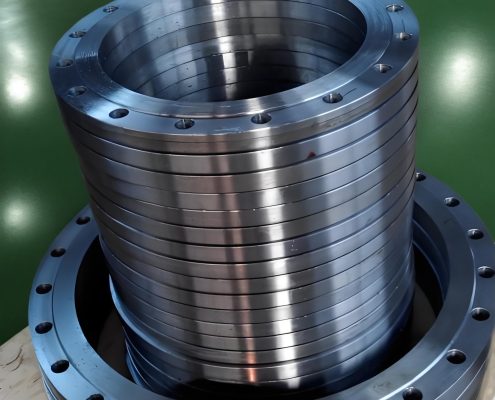Welcome to Future Energy Steel’s EN Standard Flanges product page. We offer a comprehensive range of flanges that meet EN standards, widely used in the oil, gas, chemical, and construction industries to ensure safety and reliability in various systems. Our flanges include multiple types, such as flat, welded, and blind flanges, with dimensions ranging from DN10 to DN1200, catering to diverse engineering needs. Each flange can be customized with different face designs, including flat, raised, and recessed faces, to suit specific connection requirements. For more information or inquiries, please contact us via email at [email protected].
Często zadawane pytania
What Is The EN 1092-1 Standard?
The EN 1092-1 Standard Specifies The Requirements For Flanges Used In Piping Systems, Including Their Dimensions, Materials, And Pressure Ratings. It Ensures Compatibility And Safety In Various Industrial Applications.
What Materials Are Typically Used For EN 1092-1 Flanges?
EN 1092-1 Flanges Can Be Made From Various Materials, Including Carbon Steel, Stainless Steel, and Alloy Steel.
What Are The Common Applications For EN 1092-1 Flanges?
These Flanges Are Commonly Used In Oil And Gas Pipelines, Chemical Processing Plants, Water Treatment Facilities, And Power Generation Systems.
What Are The Dimension Ranges For EN 1092-1 Flanges?
The Dimensions Of EN 1092-1 Flanges Vary Based On The Type And Pressure Rating, Typically Ranging From DN 10 To DN 4000, Accommodating Different Pipe Sizes And Requirements.
How Do I Choose The Right Flange For My Application?
Selecting The Appropriate Flange Involves Considering Factors Such As Pipe Size And Type, Pressure Rating, Material Compatibility, And Environmental Conditions.
Where Can I Purchase EN 1092-1 Standard Flanges?
You Can Purchase EN 1092-1 Standard Flanges From Reputable Suppliers Like Energy Steel, Which Offers A Wide Range Of Flanges That Meet These Standards.
Jakie są klasyfikacje i wartości ciśnienia?
Kołnierze zgodne ze standardem EN są klasyfikowane na podstawie ich konstrukcji, rodzaju okładziny i wartości ciśnienia. Wartości ciśnienia, często określane jako wartości ciśnienia PN (ciśnienie nominalne), oznaczają maksymalne ciśnienie, jakie może wytrzymać kołnierz. Typowe wartości ciśnienia dla kołnierzy zgodnych z normą EN obejmują:
PN 2,5, PN 6, PN 10, PN 16, PN 25, PN 40, PN 63, PN 100, PN 160, PN 250, PN 320, PN 400
How Many Types of EN 1092-1 Standard Flanges?
Norma EN 1092-1 określa typy kołnierzy stosowanych w systemach rurociągów, każdy zaprojektowany do określonych zastosowań i wymagań dotyczących połączeń. Główne typy kołnierzy EN 1092-1 obejmują:
Typ 01 – Kołnierz płytowy
Typ 02 – Luźny kołnierz płytowy z przyspawanym kołnierzem płytowym
Typ 05 – Kołnierz pusty
Typ 11 – Kołnierz do przyspawania
Typ 12 – Kołnierz nasuwany z piastą
Typ 13 – Kołnierz gwintowany z piastą
Typ 21 – Kołnierz z luźną płytką i pierścieniem do przyspawania
Typ 32 – Kołnierz z luźną płytą z docieranym końcem rury
Which Material is Used to Produce EN 1092-1 Flanges?
Gatunki: S235JR, S355JR, P235GH, P265GH, P355GH, 16Mo3, 13CrMo4-5, 10CrMo9-10


